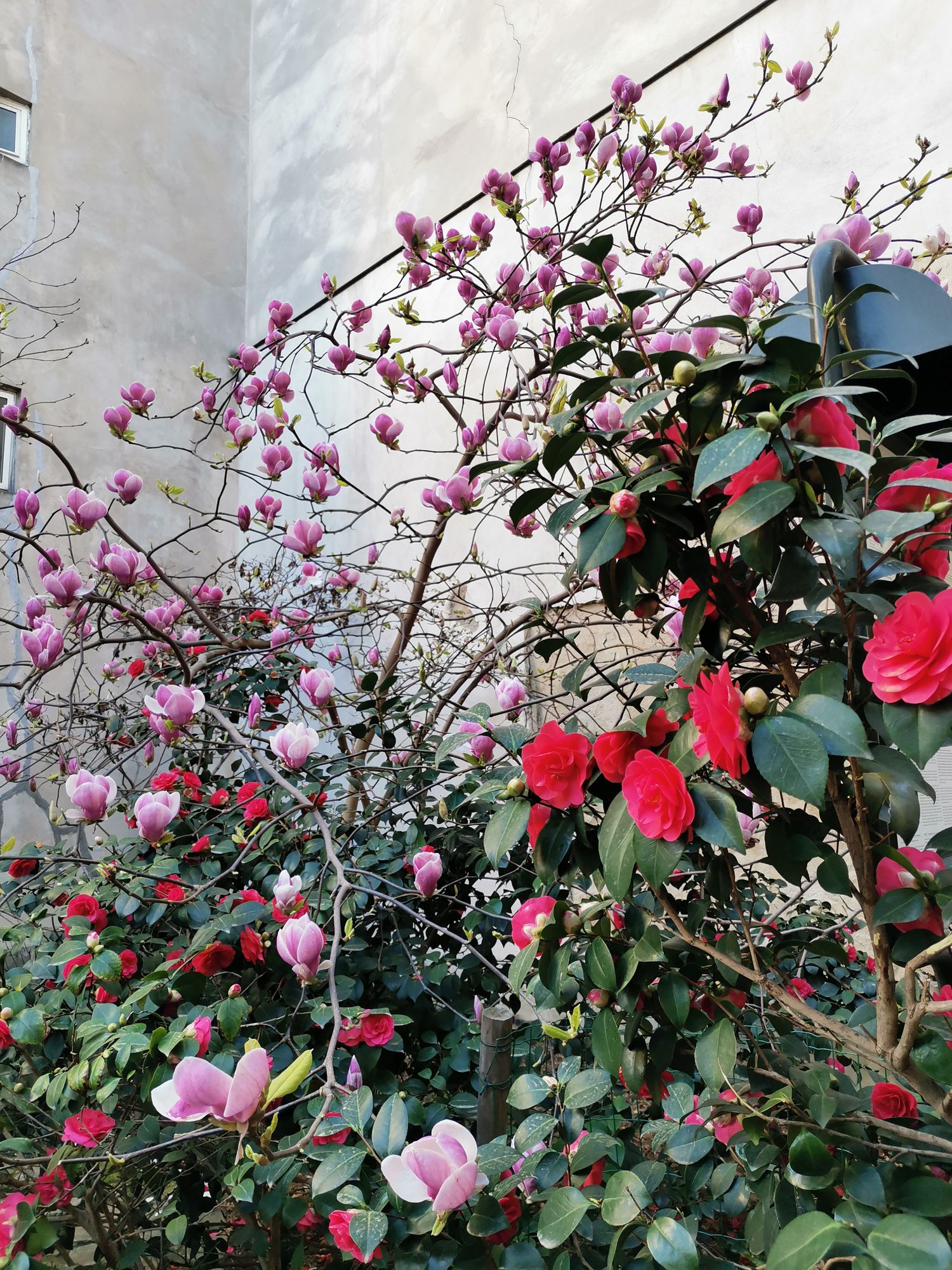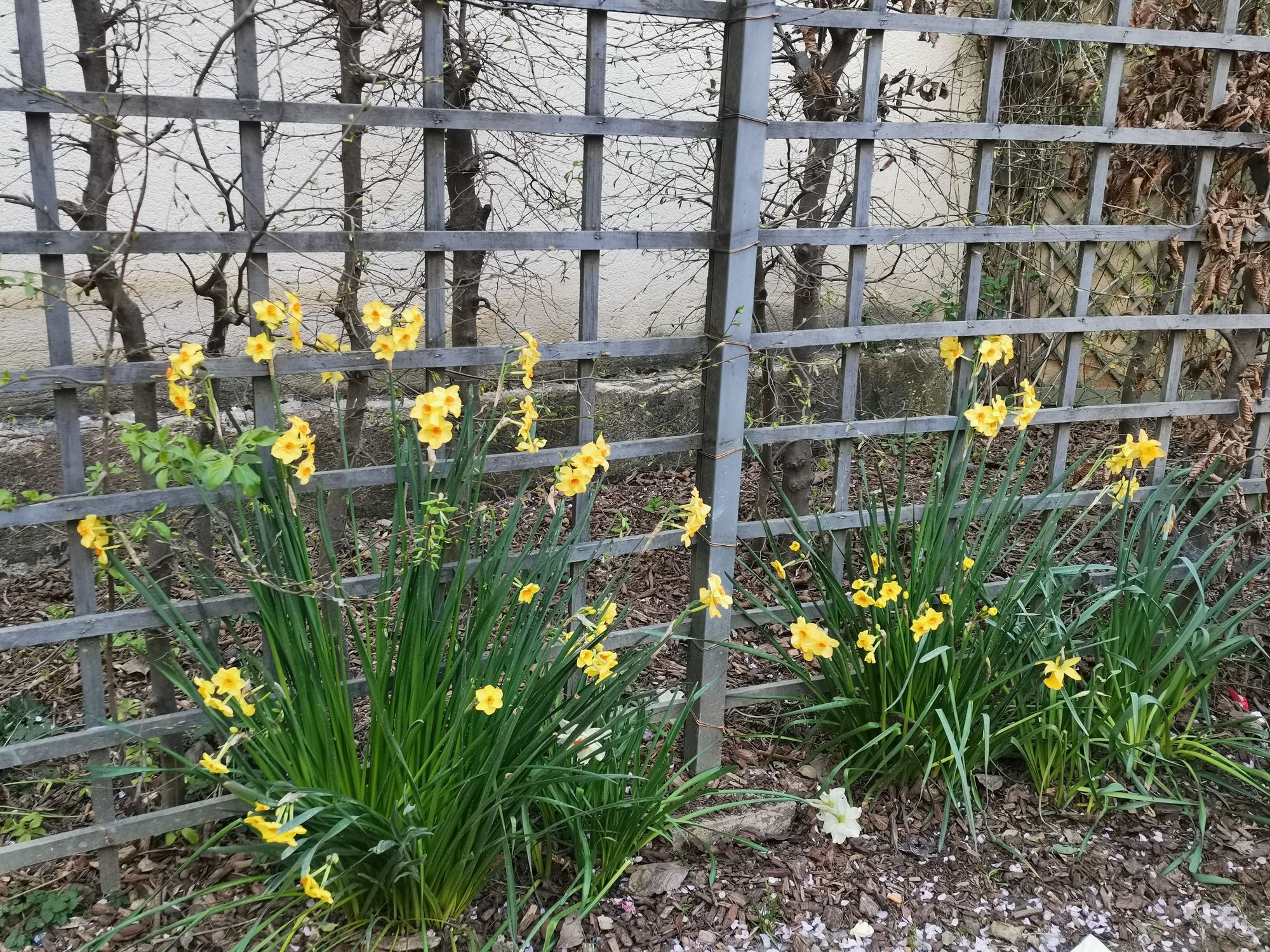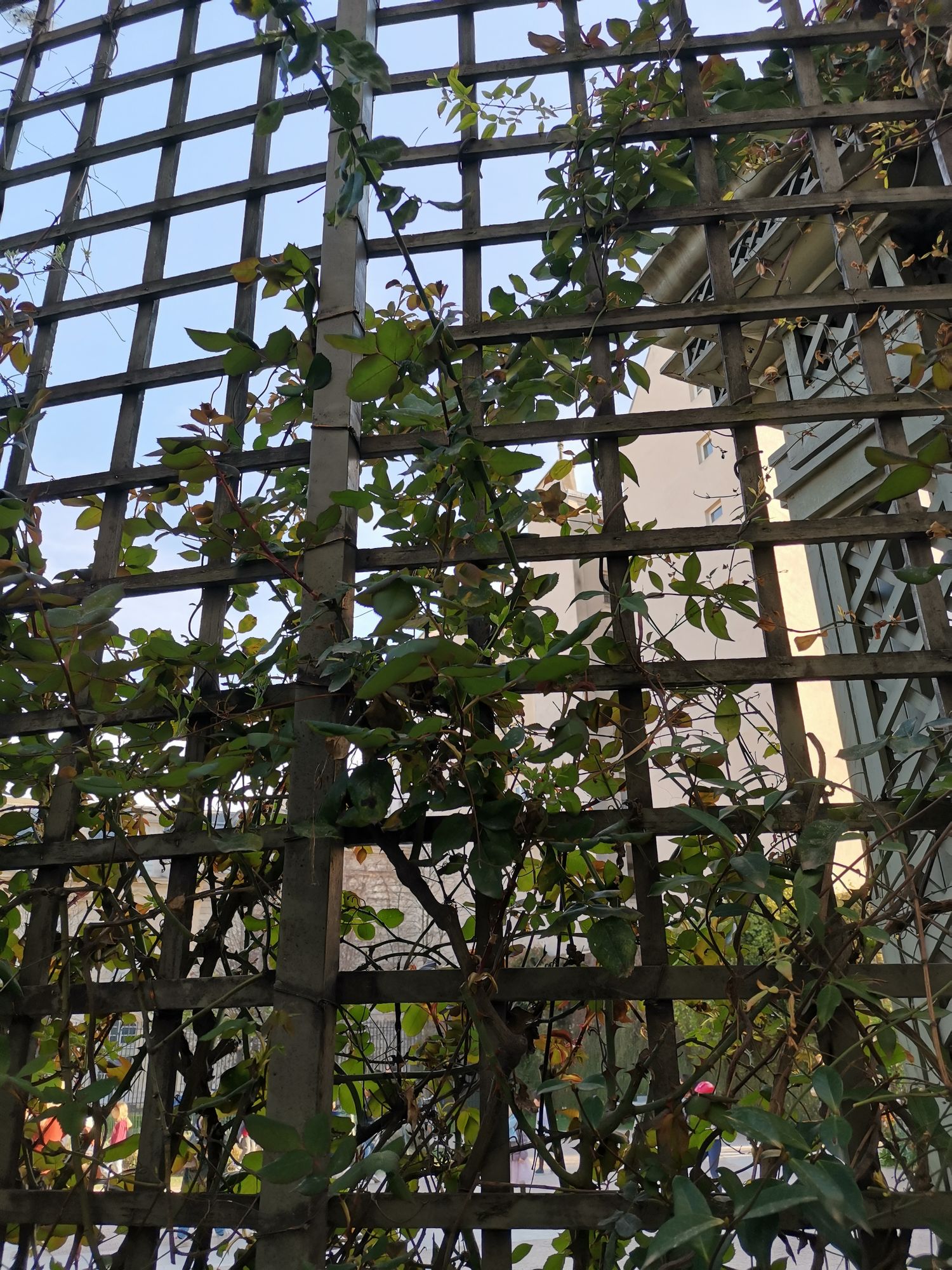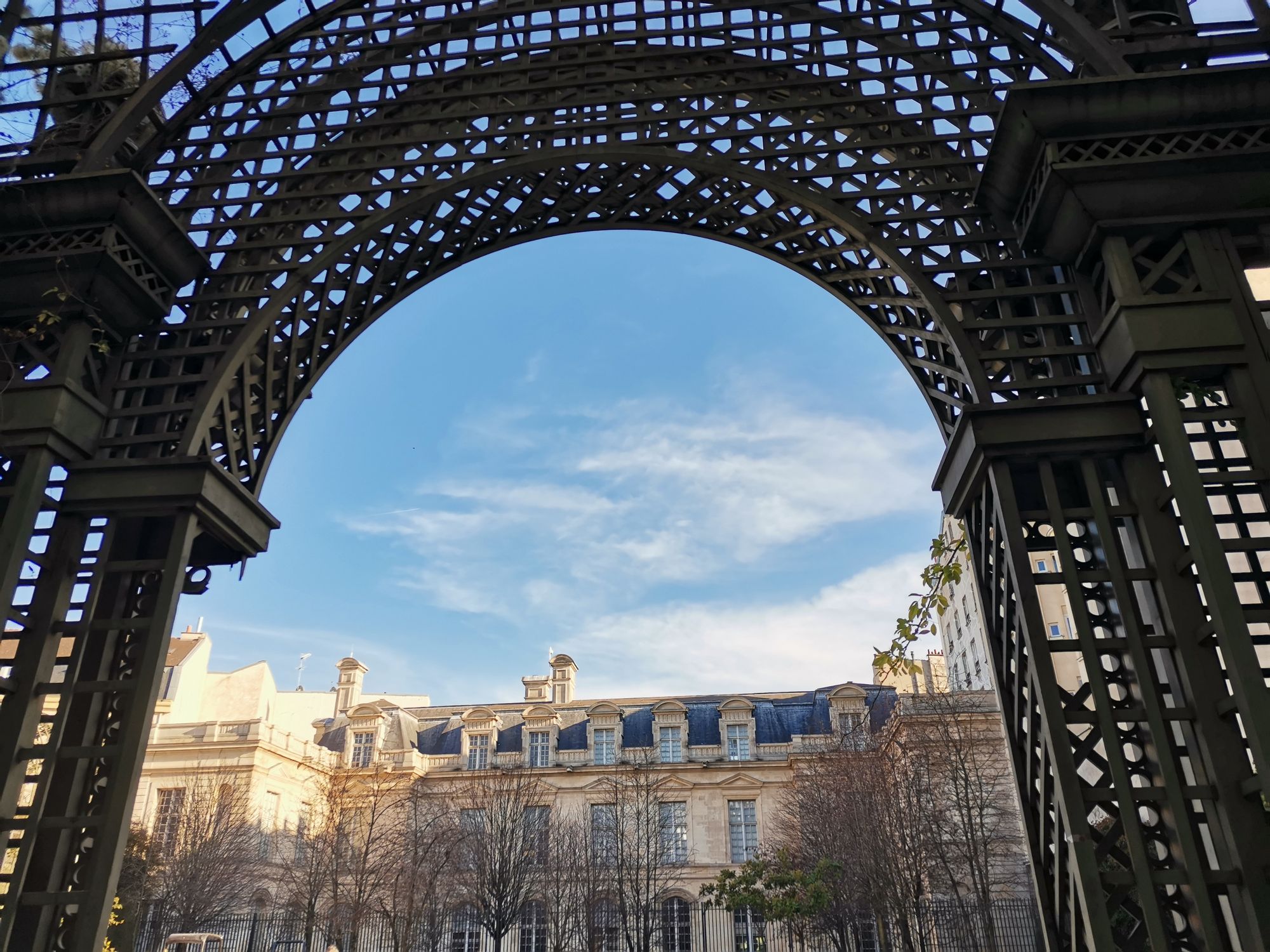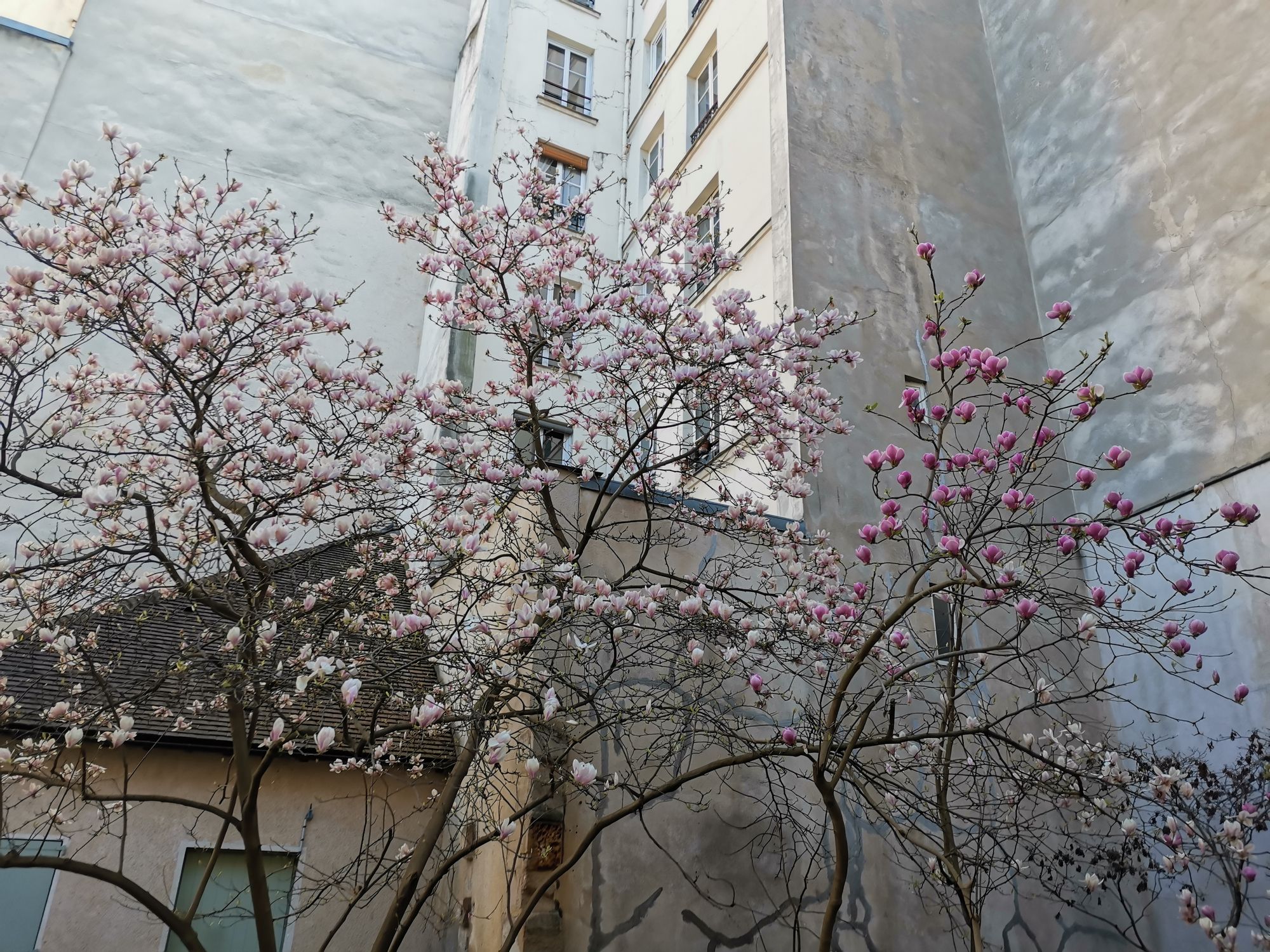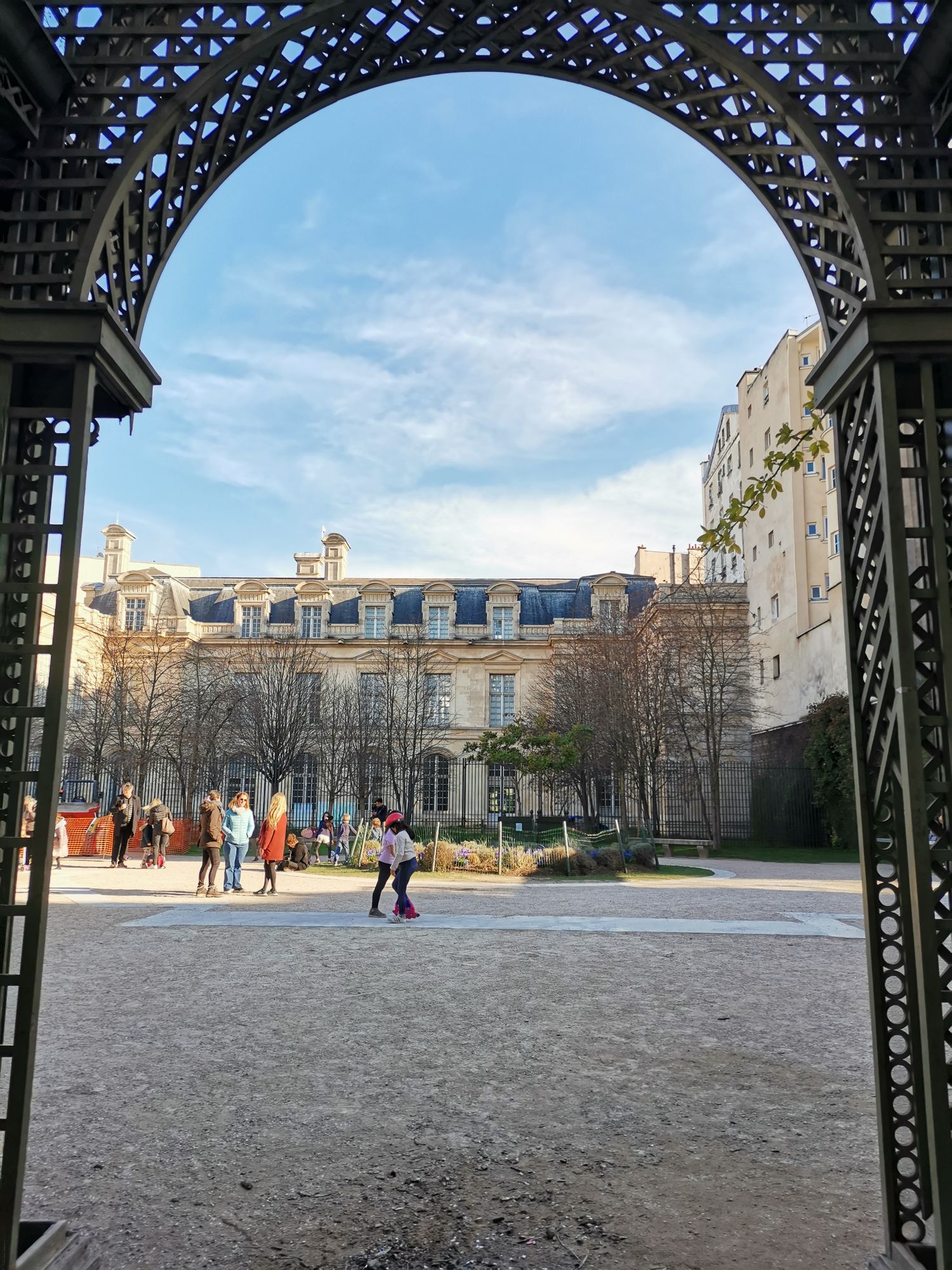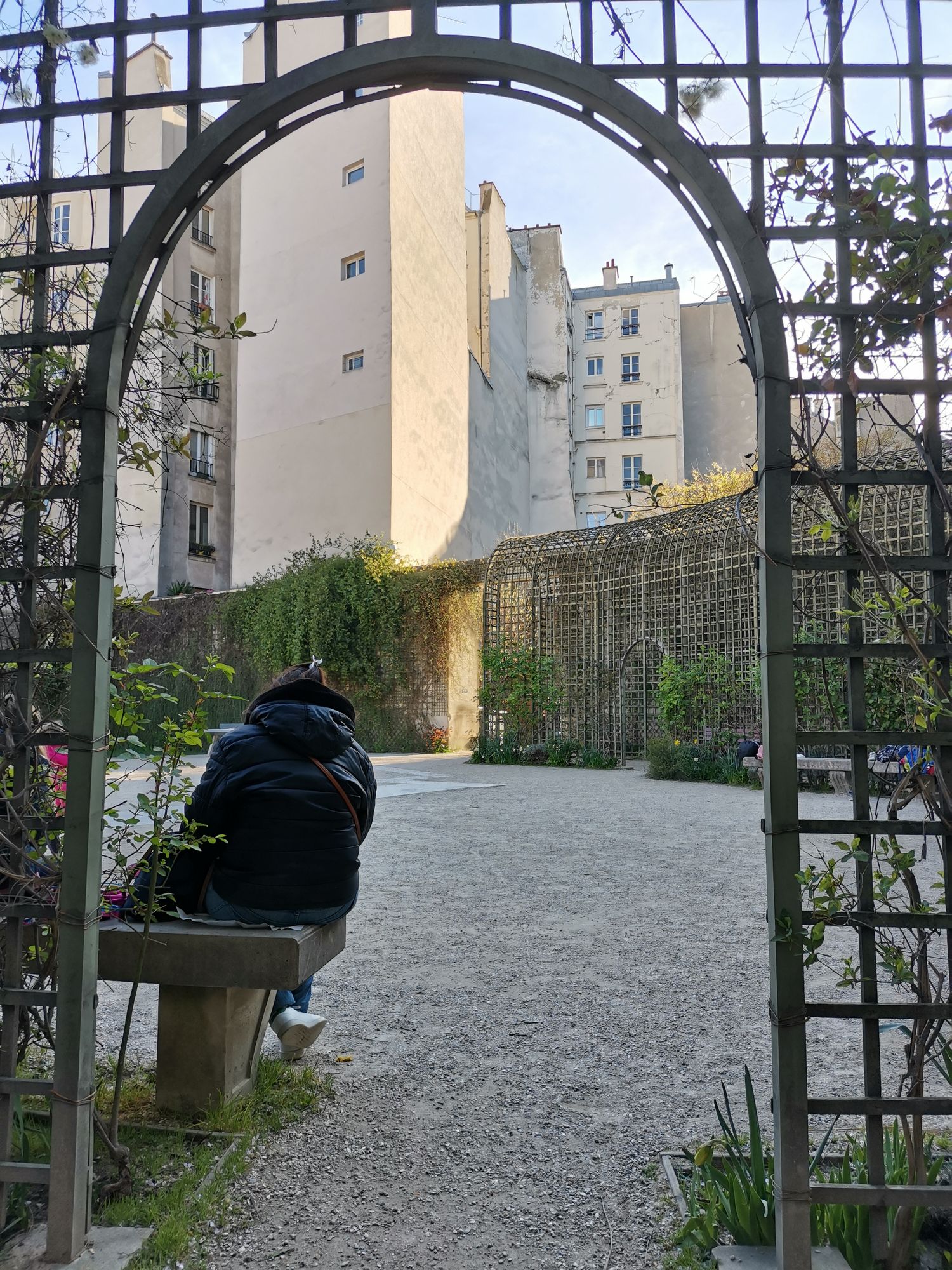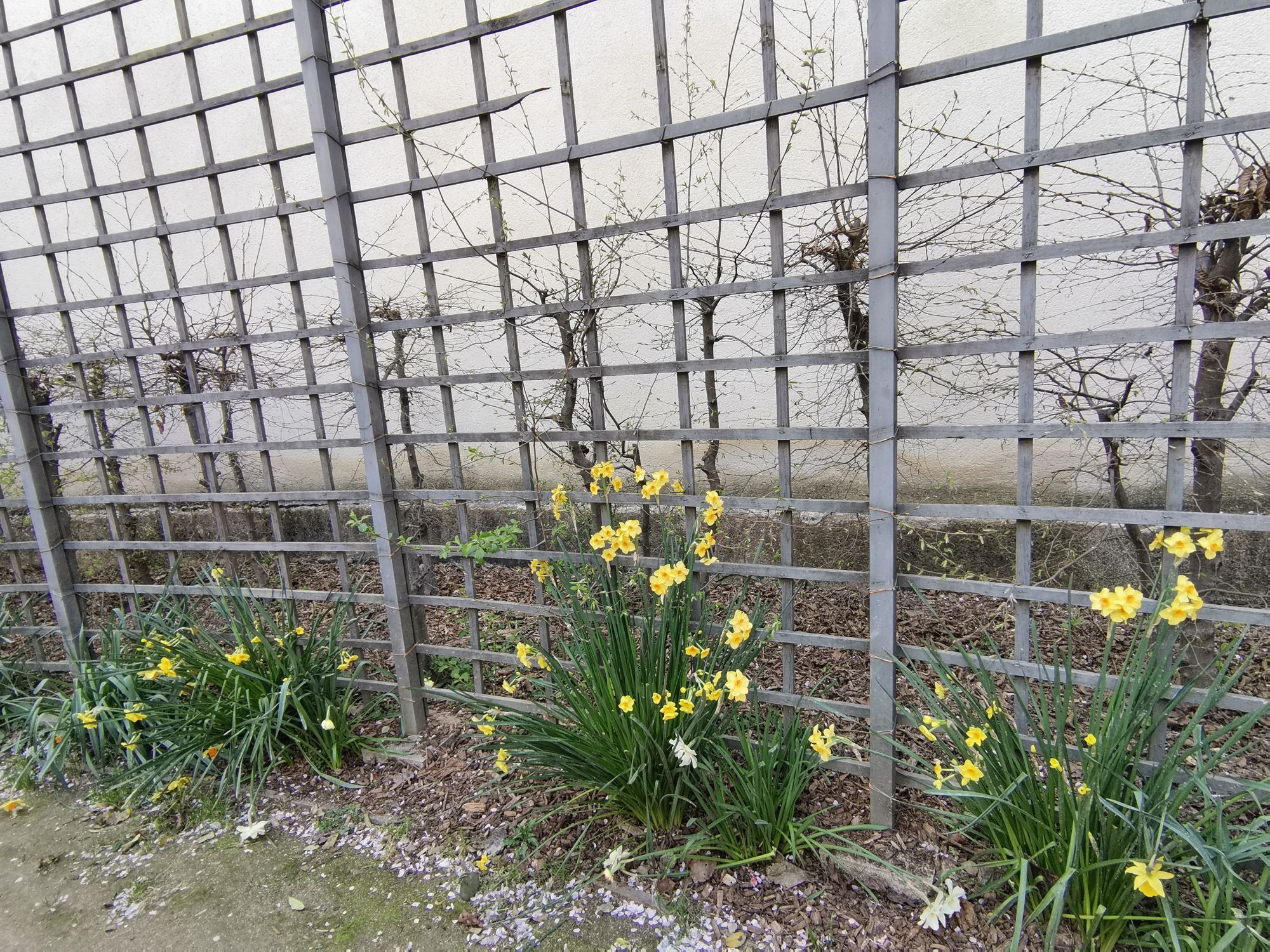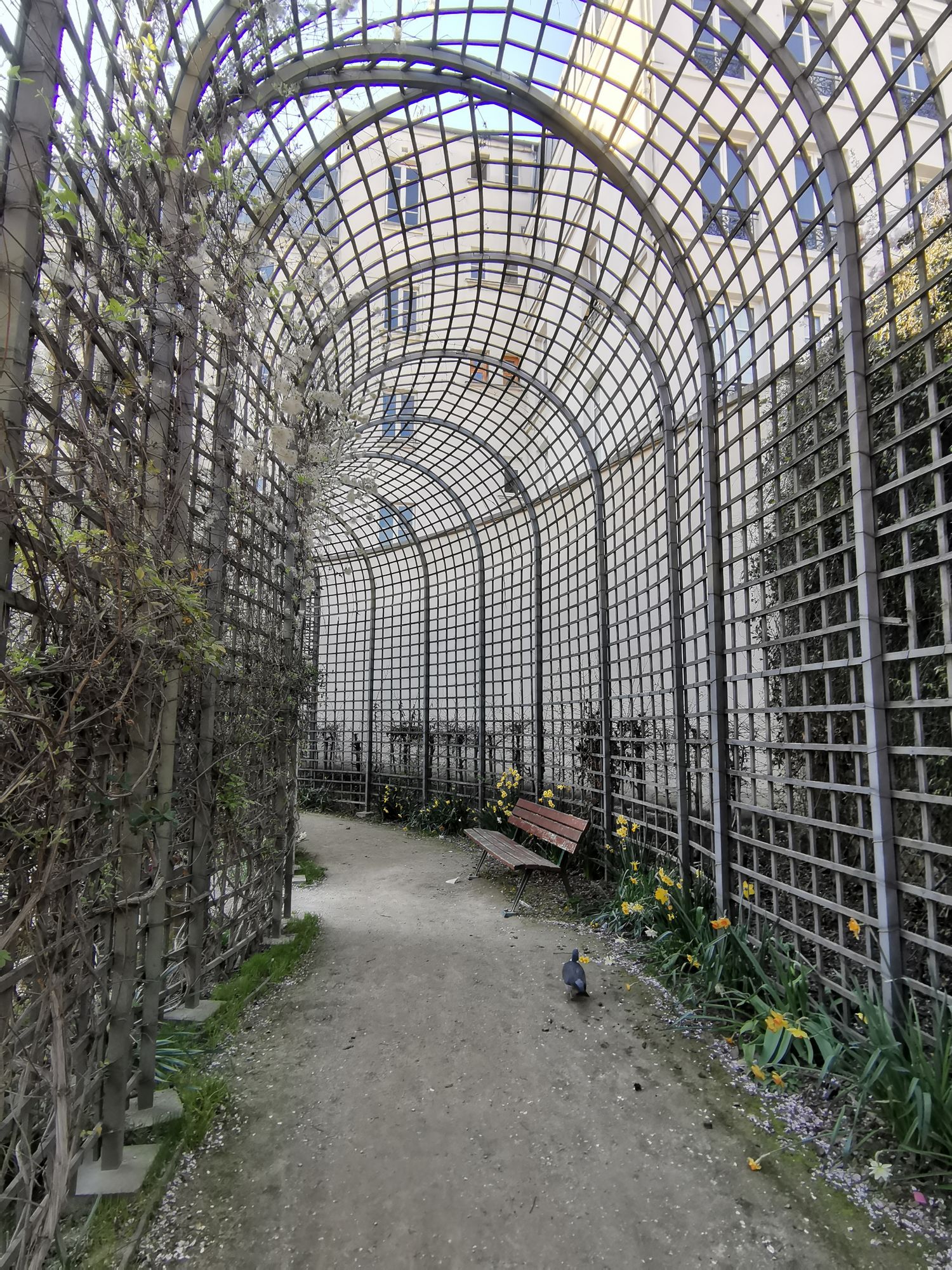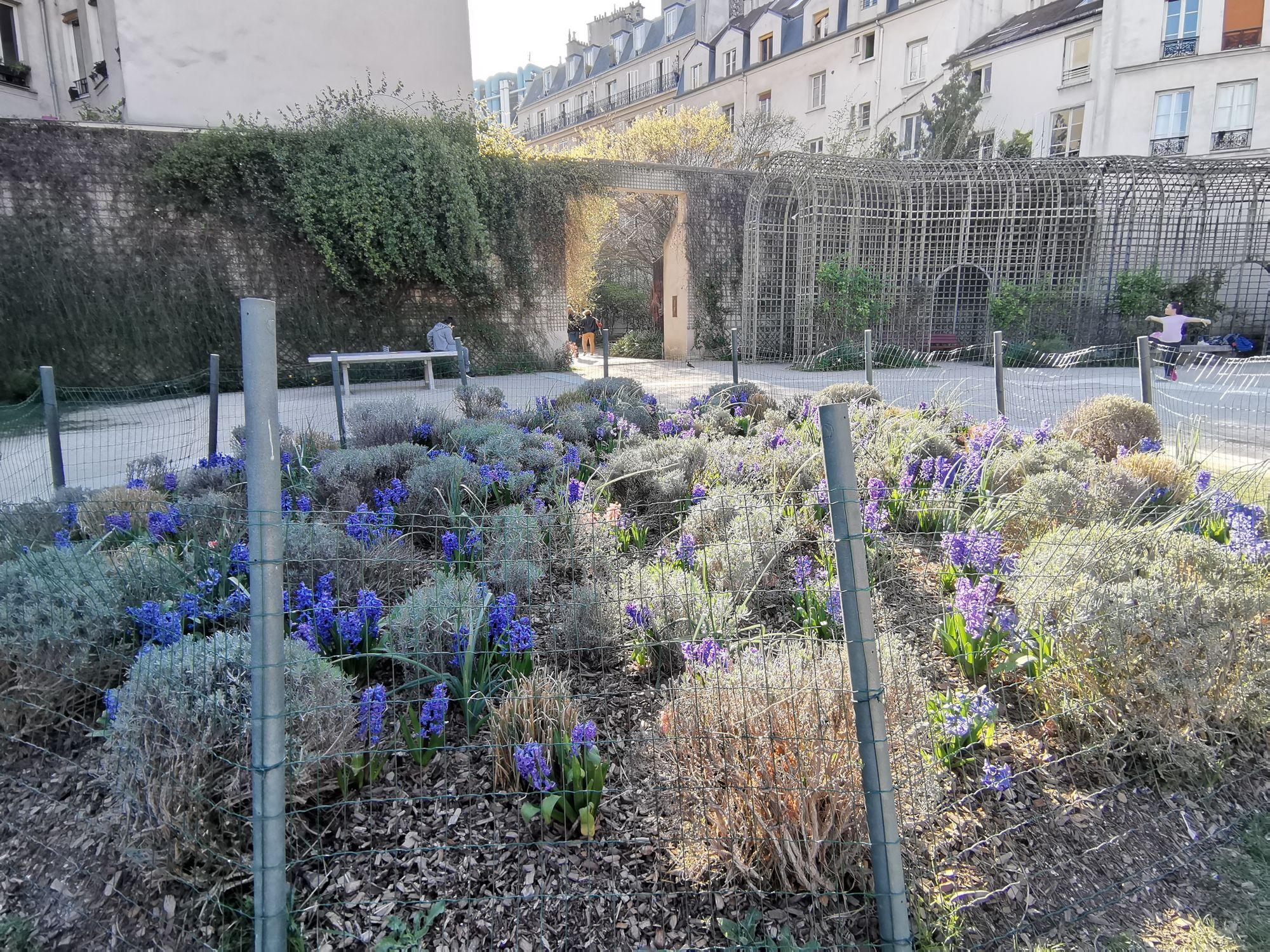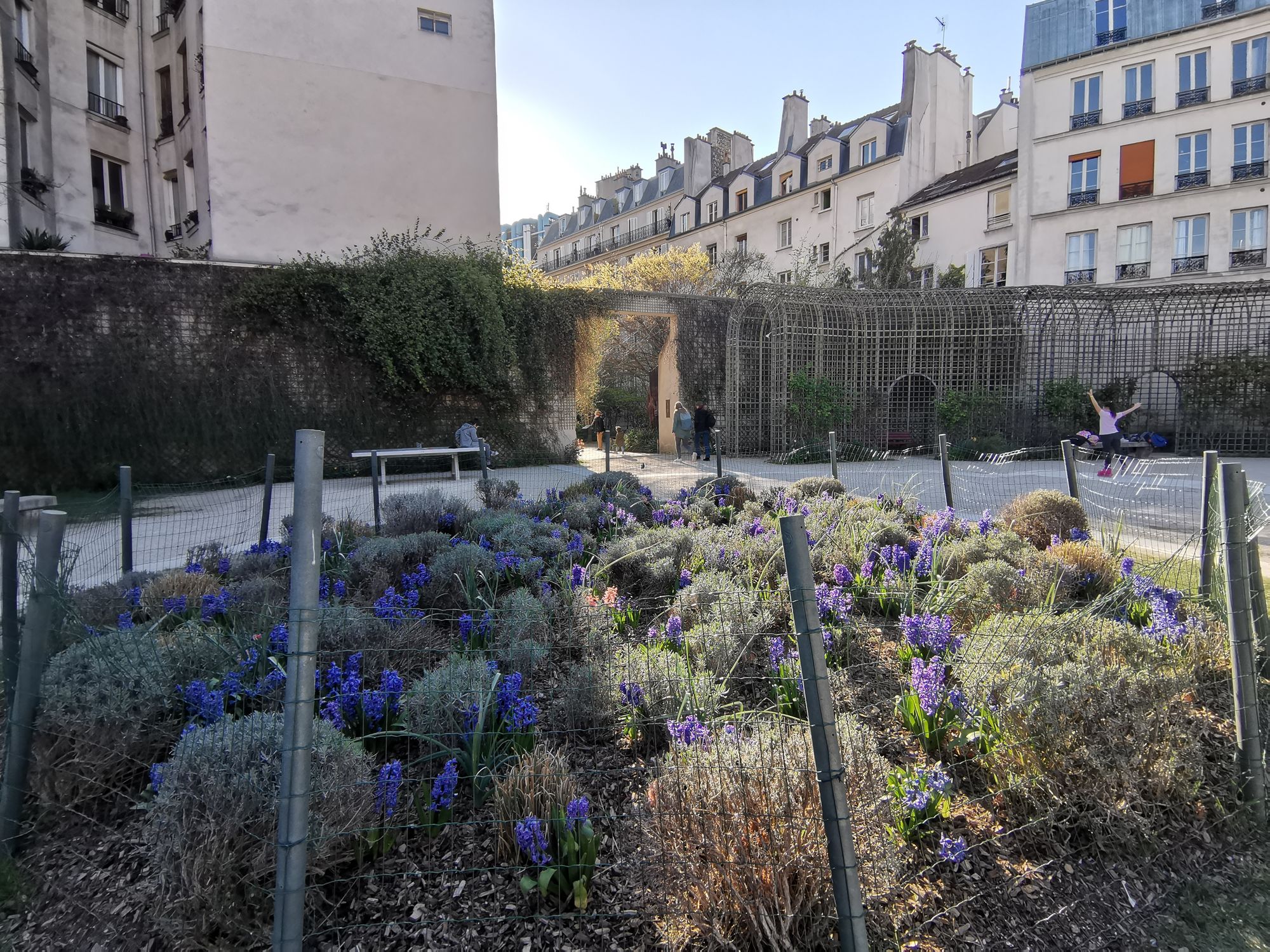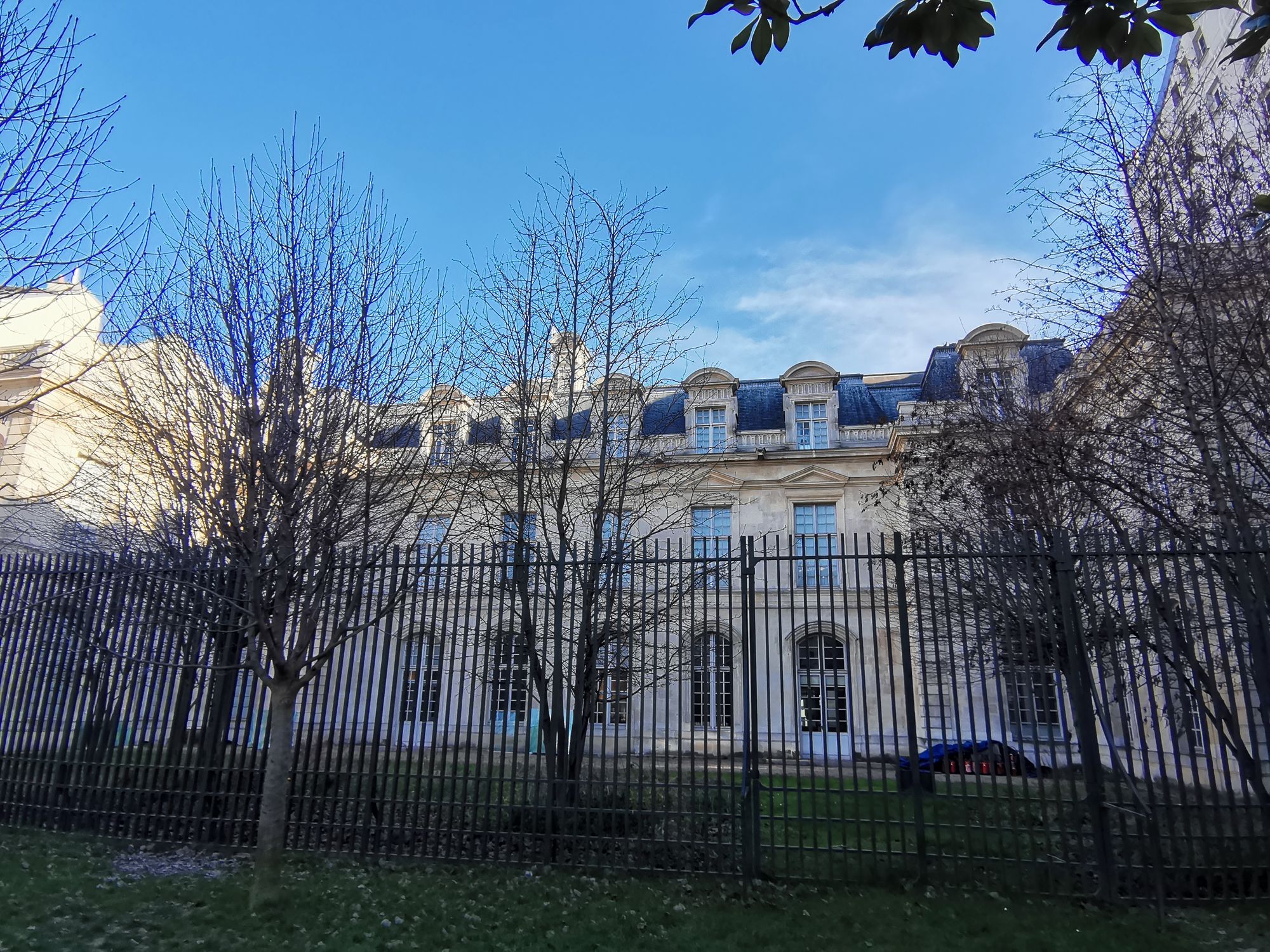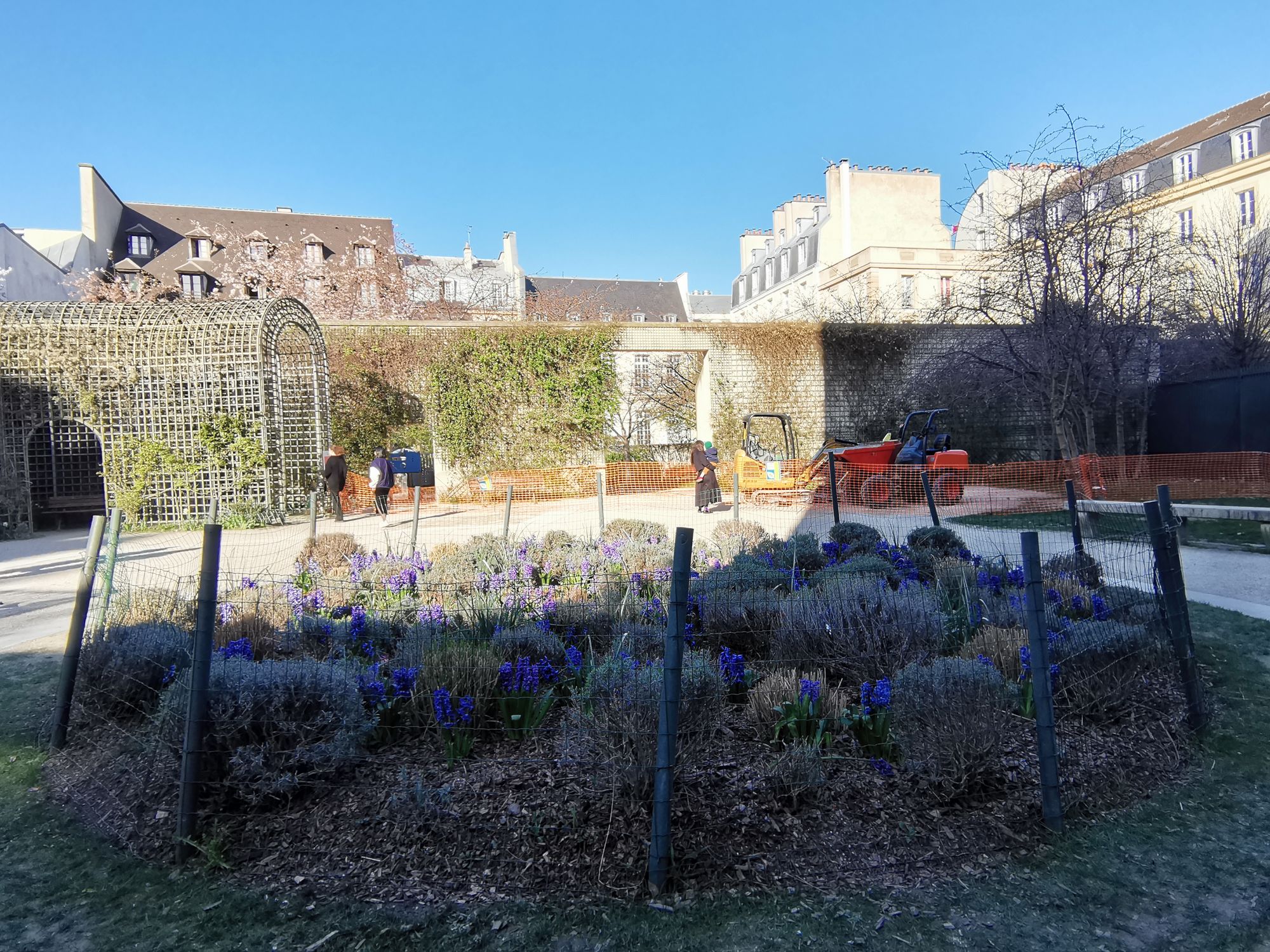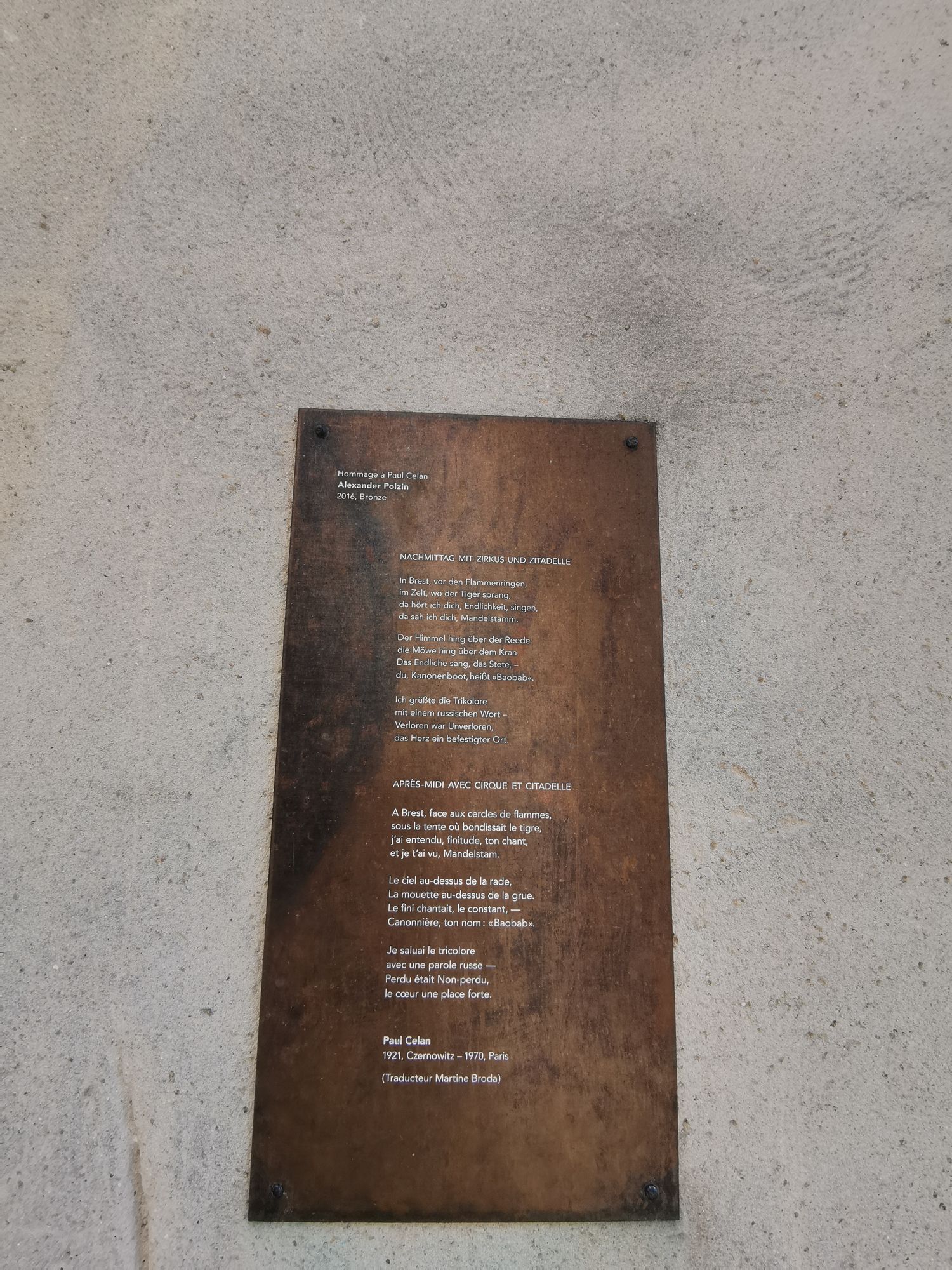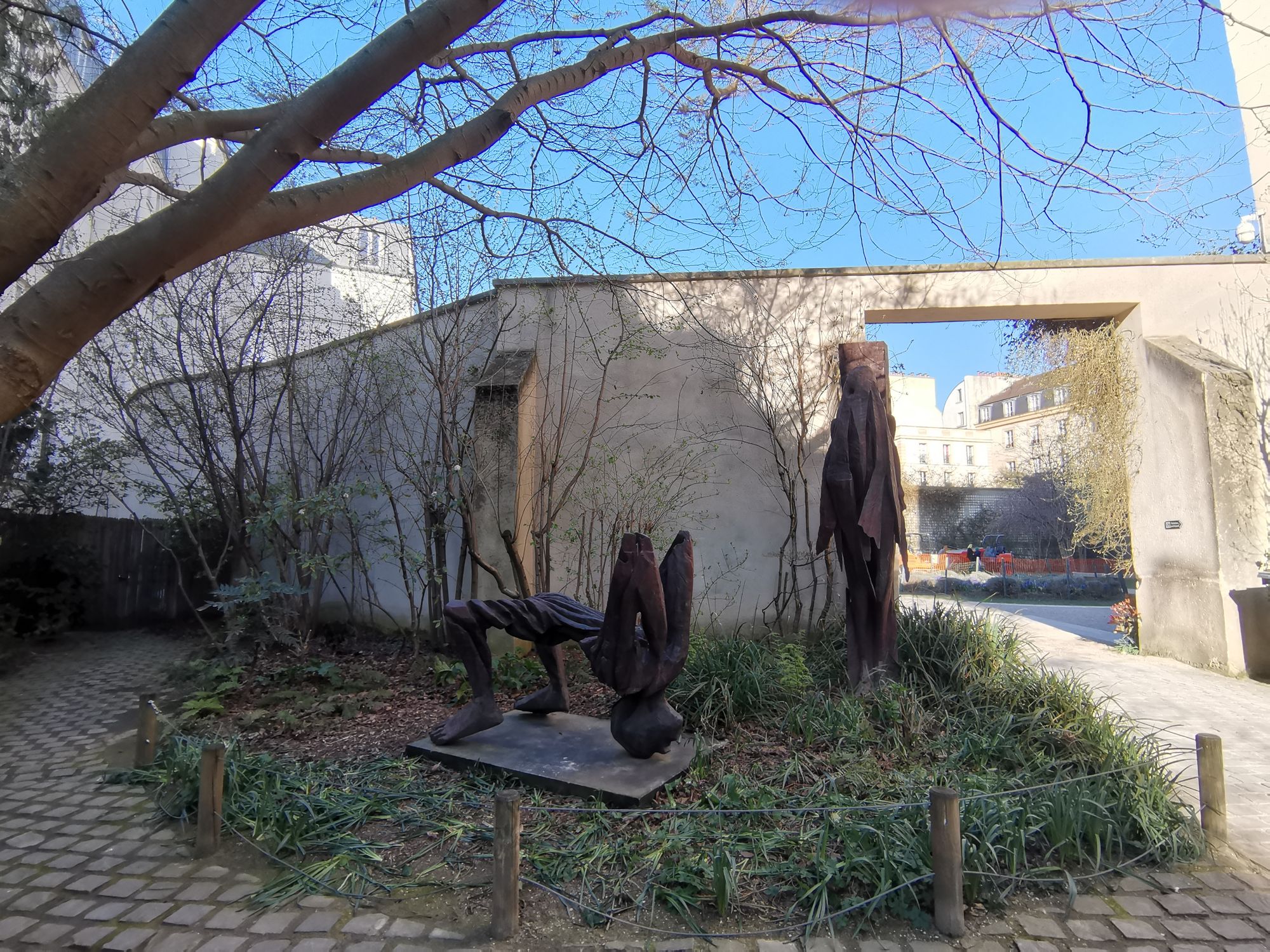Anne Frank Garden
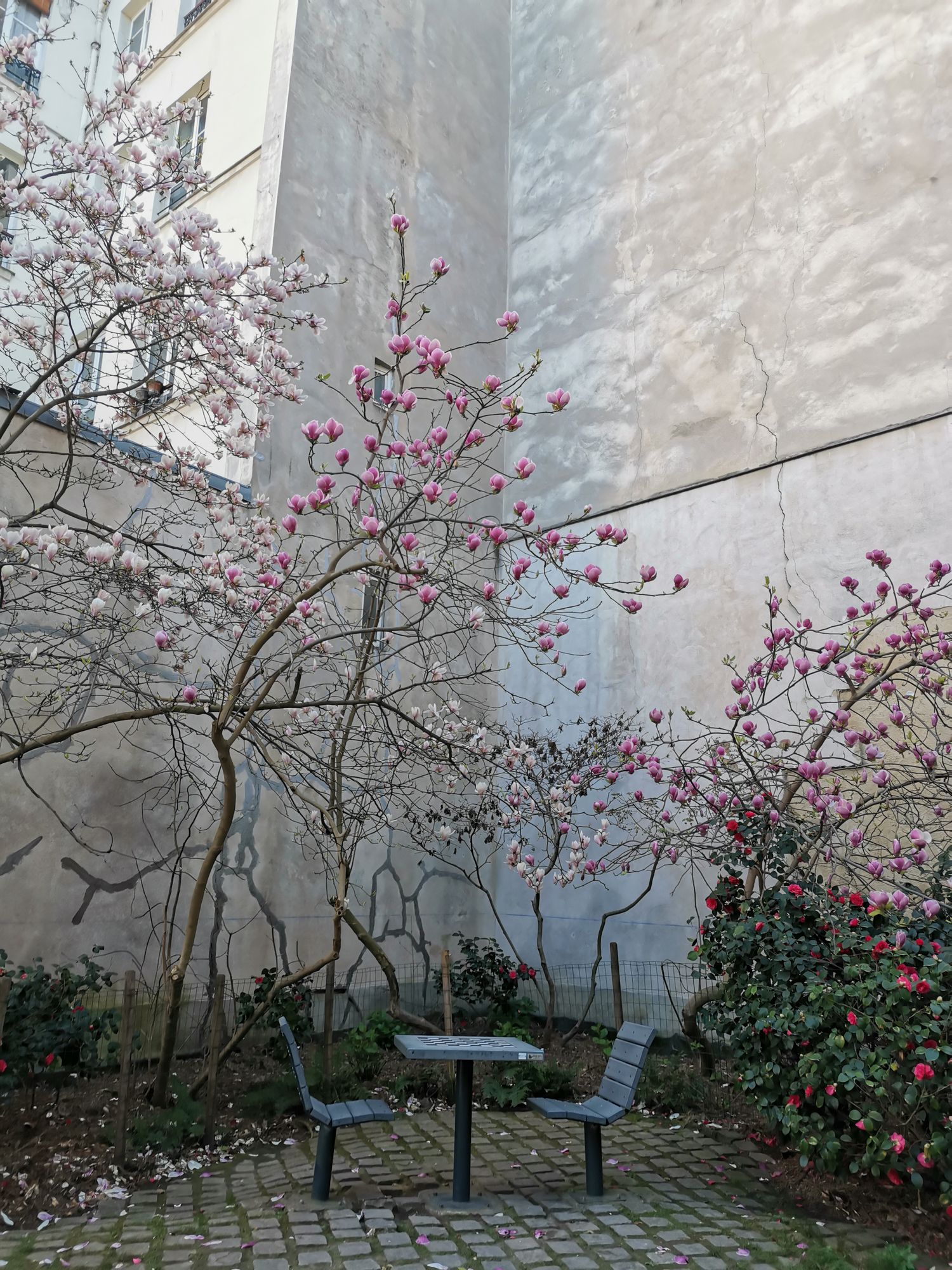 The square pays tribute to Anne Frank (1929-1945), a German teenager who took refuge in Amsterdam and fell victim to Nazi barbarism. Published after the Second World War, her diary is one of the most widely read books in the world.
The square pays tribute to Anne Frank (1929-1945), a German teenager who took refuge in Amsterdam and fell victim to Nazi barbarism. Published after the Second World War, her diary is one of the most widely read books in the world. The garden of the Hôtel Saint-Aignan, which houses the Musée d'art et d'histoire du Judaïsme, is divided into three sections. The first is contemporary in style. A griffin from the chestnut tree that the young girl admired from her window was planted on June 20, 2007. The central plot has existed since the 17th century. The final section was designed as an orchard.
The garden opened in 2007 and is owned by the Mairie de Paris in the Marais district of Paris.
About Anne Frank
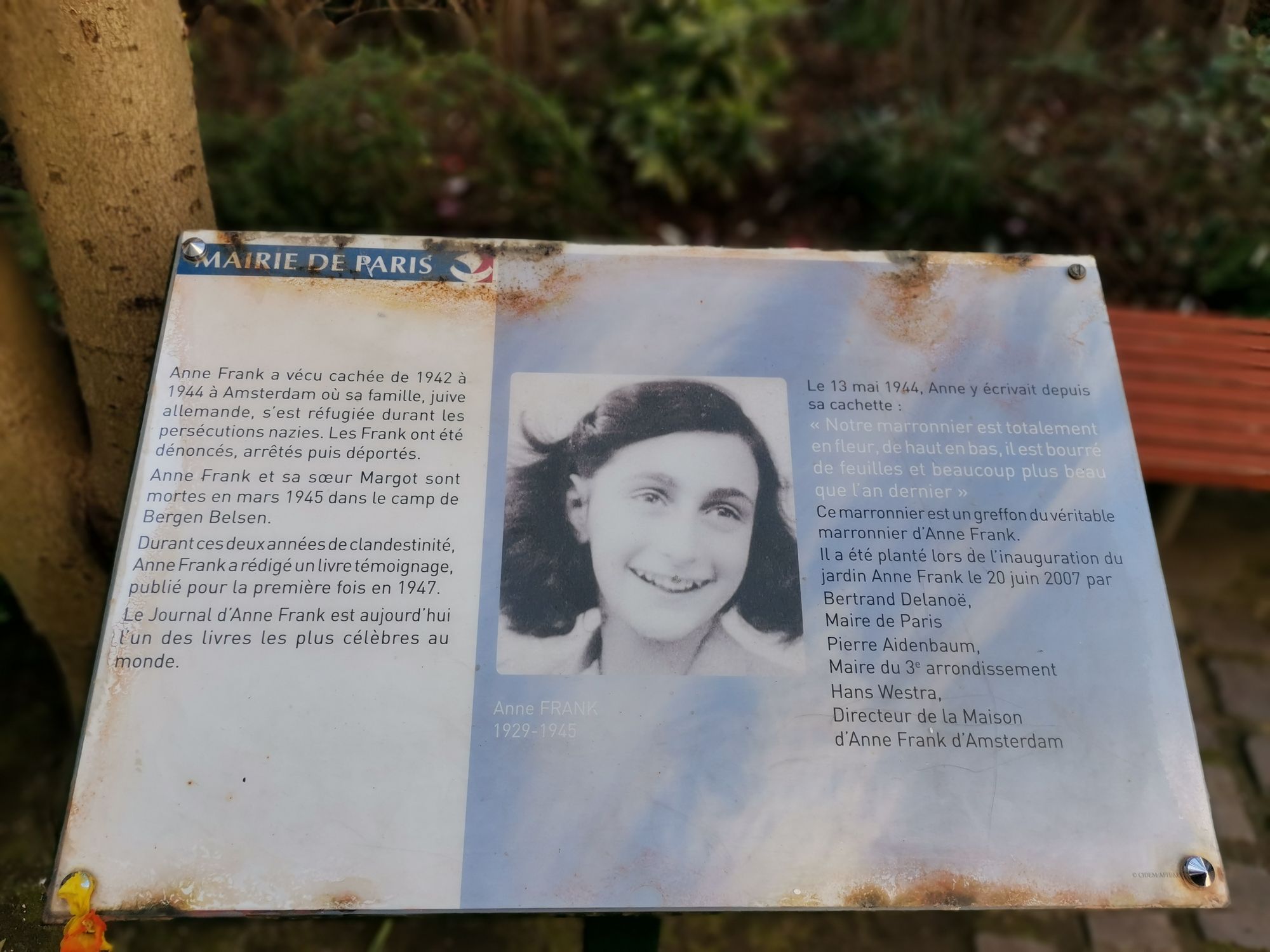 Anne Frank lived in hiding from 1942 to 1944 in Amsterdam, where her German-Jewish family had fled during the Nazi persecutions. The Franks were denounced, arrested and deported. Anne Frank and her sister Margot died in the Bergen Bensen camp in March 1945. During these two years in hiding, Anne Frank wrote a memoir, first published in 1947. [The Diary of Anne Frank is now one of the most famous books in the world.
Anne Frank lived in hiding from 1942 to 1944 in Amsterdam, where her German-Jewish family had fled during the Nazi persecutions. The Franks were denounced, arrested and deported. Anne Frank and her sister Margot died in the Bergen Bensen camp in March 1945. During these two years in hiding, Anne Frank wrote a memoir, first published in 1947. [The Diary of Anne Frank is now one of the most famous books in the world.On May 13, 1944, Anne wrote from her hiding place:
“Our chestnut tree is totally in bloom, from top to bottom, it's packed with leaves and much more beautiful than last year”.
The chestnut tree in the Square Anne Frank is a graft of the real Anne Frank chestnut tree, and was planted at the inauguration of the Anne Frank garden on June 20, 2007 by Bertrand Delanoë, Mayor of Paris, Pierre Heidenbaum, Mayor of the 3rd arrondissement of Paris and Hans Westra, Director of the Anne Frank House in Amsterdam.
Some photos of the Anne Frank garden
Summary of gardens and squares in the Marais
